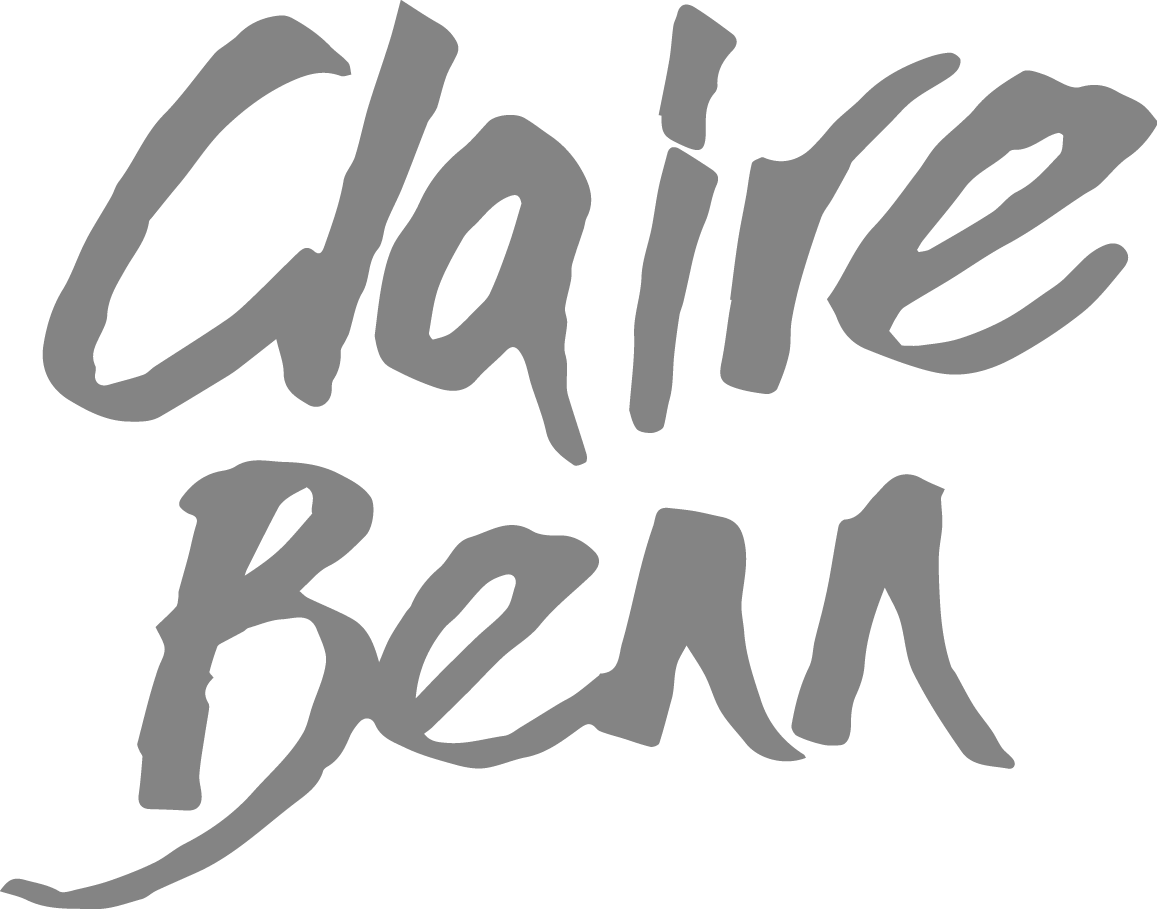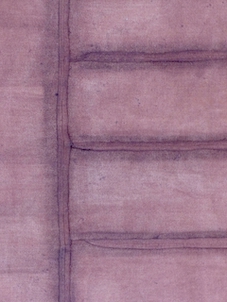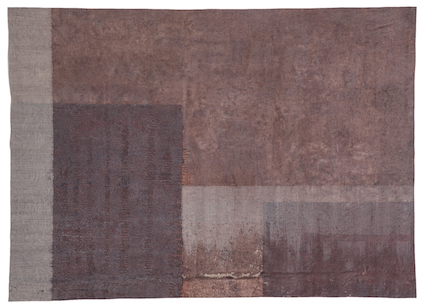Taking my own advice
Working with bleed; liquid media on dry cloth.
In July’s essay I discussed the importance of the ‘what if?” which I subsequently felt could be explored further. I created a long ‘what if’ list at the start of the ‘Inside Atacama’ series and found several ways of working that gave me what I wanted. However, whilst I want a body of work to feel harmonious, I don’t want it to feel repetitive. For example, using creased plastic under my cloth and then flooding the cloth with runny wet media gives me marks that reference rock. But if I stick to that for too long I could achieve harmony but sacrifice variety and get too formulaic.
As such, I’ve been re-evaluating my ‘what ifs’ and re-visiting some of my teaching handouts in relation to that topic. One stood out as being a useful aid for coming up with ideas to change the way we might handle media, tools and even the cloth or substrate we’re working with.
Now, those of you who’re reading this may be past or present students of mine and already have this information as a handout. But if you’re like me, it’s all too easy to file information away and then forget about it, so this might be a timely reminder. As with any experimentation and exploration there are no guarantees the end result will be to your liking or suit where you’re trying to get to, but that’s just the way it is and whatever the outcomes, we learn.
Let’s tackle the substrate first which I’m going to assume for many of you is a piece of cloth.., but it could be a piece of paper or a canvas. I started my career by working with dye paints and learning the key surface design techniques on dry cloth, so that meant working with the cloth flat on the bench. So how can we vary that?
Staying on a flat, horizontal surface:
A workbench covered with a dropcloth.
A workbench covered with plastic.
The floor.
The garden path or driveway.
On grass.
Placing items or textures underneath the cloth before we start work or working on any lumpy or uneven surface such as an old shed door, a piece of rusted sheet metal or packaging materials. The next image shows the marks made from pieces of creased plastic placed underneath the cloth.
Marks from creased plastic
And if we’re working flat let’s not forget we can walk, run, stamp and dance across our cloth with media-covered shoes, or ride across it on a bicycle whose tires have been pre-painted with media.
We can also:
Pre-scrumple, crease, pleat or fold the cloth (whether it be dry, damp or wet). The cloth in the next image was packed into a litter tray and left to dry before being slightly stretched out on the table before applying the dye paint.
Scrumples, pleats and folds can be stitched in permanently before or after process. This is a detail of a creased, stitched and painted muslin, appliquéd to a piece called ‘Slab’ from the ‘Inside Atacama’ series:
We can tear or cut the cloth up and stitch it back together by machine or hand, with seams or raw edges. The image on the left shows a detail of painted, pieced cloth with the raw seam edges. On the right is the same piece of cloth seen from the other side - it was sanded back on an uneven plywood surface.
And we don’t have to cut, tear and stitch back together. Torn or cut pieces can be arranged on the table and re-arranged at different stages of your process or experimentation.
Working on damp or wet cloth (if wet, best to work on a water-proof surface) can also yield interesting results and the level of bleed will vary according to the consistency of the media.
And let’s not forget ‘protecting’ areas of the cloth with resists which can be added or removed at any point;
Torn or cut paper, freezer paper, baking parchment, tin foil or masking tape.
Pieces of plastic can be cut with scissors or a craft knife. Using a hot knife or soldering iron to cut plastic can give pleasing, uneven edges.
We have access to cheap or free items such as string, thread, paper clips, rubber bands, toothpicks, cocktail & satay sticks, chopsticks.., the list is endless.
String used as a resist on top of the cloth, or it could be placed beneath it
Sheds and workshops can yield rubber or metal washers, nails, elastic bands and off-cuts of metal or wood.
The outdoor environment can yield stones, bits of rock, pebbles, grit, gravel, leaves, twigs and sticks.
And there are many types of permanent resists such as candles, crayons, oil sticks or acrylic mediums and acrylic waxes. Soy wax can also be used and removed by washing out at 60C. Candle or Batik wax can be ironed out or left in.
And we can come off the table or workbench and work on the wall (covered in plastic first if necessary). If we don’t have a suitable indoor wall we can pin or tape cloth to a piece of foam core or insulation board and lean it against an outside wall. We can peg our cloth to a washing line and see how movement caused by the breeze creates serendipity in the marks or texture. The next image shows a demonstration where I’m working upright on an old, painted metal door. The lumps and bumps caused the tinted medium to run and settle in different ways.
Working on a door
Whilst the initial outcome wasn’t that pleasing, the marks gave me a great starting point for working the piece up. It turned in to ‘Plateau’:
‘Plateau’, Claire Benn
The variations in terms of how we arrange, place or ‘present’ our cloth at any stage of process are potentially endless and have an impact on which tools we use and how we interact physically with those tools, for example:
Alter your grip (e.g. hold the tool in an awkward manner).
Work from the wrist, elbow, shoulder.
Tie tools to a long stick. The image below shows chunky graphite tied to a long, bendy/whippy bamboo stick. Whilst the substrate is paper, some graphite can be used on cloth and then over-worked without it bleeding out.
Hold the tool in your left hand (or right if you’re left-handed), foot, mouth/teeth.
Work with a blindfold, close your eyes or work without looking at the piece of cloth.
Stand on one leg and wobble about.
Vary your physical approach by engaging with commands or ‘action verbs’; Roll, Dab, Dribble, Drip, Pounce, Tap, Smear, Swirl, Spread, Scrape, Flick, Squirt, Throw, Hurl, Drag, Blend, Saturate, Rub, Spray, Spatter, Pour, Wiggle, Roll, Bash etc.
The tools you use and the way you’re using them will also determine how you might need to alter your media. Does it need to be made looser or runnier in order to better flick, spatter, dribble, squirt, spray or pour? In other words, the consistency will determine how it can ‘travel’. Thicker consistencies may be better for scraping, dragging, rubbing, rolling, dabbing, spreading or smearing.
Whatever we do and however we do it will yield marks in the form of line, shape and texture. So how can we vary these marks? By applying more commands or action verbs:
Bend, Curve, Swirl, Rotate
Wobble, Wiggle, Straighten
Stretch, Elongate, Lengthen, Expand
Compress, Squash, Shorten
Enlarge, Reduce
Split Apart, Separate, Scatter, Disarrange, Heap, Pile Up
Group, Arrange, Put in a Row, Pair, Systemise
Weave, Interlock, Join, Bundle
Simplify, Edit, Distill, Erase (part of it)
Enclose, Surround, Encircle.
And we have options in a never-ending range of colours and values. Restricting yourself to only using black and greys will enable you to clearly see resulting marks and textures without being distracted by colour. But working with different colours and values will help you to learn more about blending and build a colour palette that suits your subject matter.
Whilst I’ve explored many of these approaches in the past, I’m going get busy in August, take my own advice and re-visit them to see what else may bear fruit for the ‘Inside Atacama’ body of work. I’ll try and remember to take some images as I progress to share with you later.
For those of you who may be new to working with cloth and are starting a journey with fibre-reactive dyes, a set of three videos with supporting pdf downloads is available through Galli Creative called ‘Exploring Fibre Reactives Dyes’. To learn more or to purchase the link is https://gallicreative.com/?s=exploring+fiber+reactive+dyes










